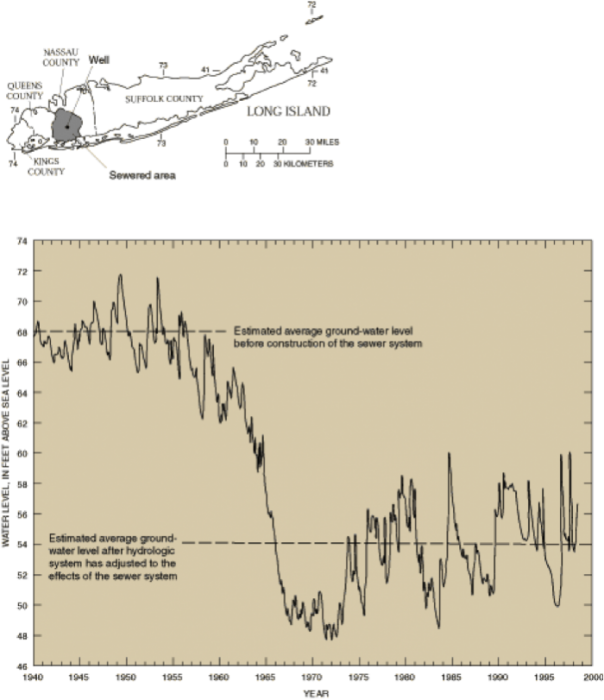Water Budgets
The balance of water inflows and outflows, or water budget, for a groundwater system, is described by a simple equation:
where I is the total of the inflows to the system, O the total outflows and ΔS is the change in storage. The water balance equation is no different than a bank statement: the difference between deposits (inflows) and withdrawals (outflows) is equal to the change in the account balance (storage). In the case of groundwater systems, changes in storage are manifested as changes in the potentiometric surface, either due to drop in the water table (in unconfined aquifers) or reduction in elastic storage as aquifer is depressurized (in confined aquifers).
In a steady state, or equilibrium condition, inflows and outflows are perfectly balanced (i.e. I = O in the budget equation above), and ΔS is zero. In other words, the potentiometric surface is steady. Often, groundwater systems are considered to be at steady state if inflows and outflows balance over a yearly or decadal timescale. This is because, in many aquifers, both recharge and extraction may be strongly seasonal. For example, recharge in many aquifers in the western US is mostly restricted to the winter months when precipitation is highest, and withdrawal rates are highest in the summer and early fall dry season. As a result, the potentiometric surface may fluctuate over the course of the year but is more-or-less constant over the long-term.
A variety of processes can lead to non-steady state conditions. Most notably in aquifers that are used heavily for irrigation, industry, or municipal supply, pumping may significantly exceed recharge, leading to net decreases in storage. In other cases, reduced recharge – for example due to urbanization and construction of impervious surfaces that do not allow infiltration, removal of leach fields upon installation of sewers (Figure 30), or long-term climate trends that drive changes in the amount or timing of precipitation – also results in negative changes in storage. Reductions in groundwater extraction, or periods of increased precipitation, will have the opposite effect and lead to increases in storage.

